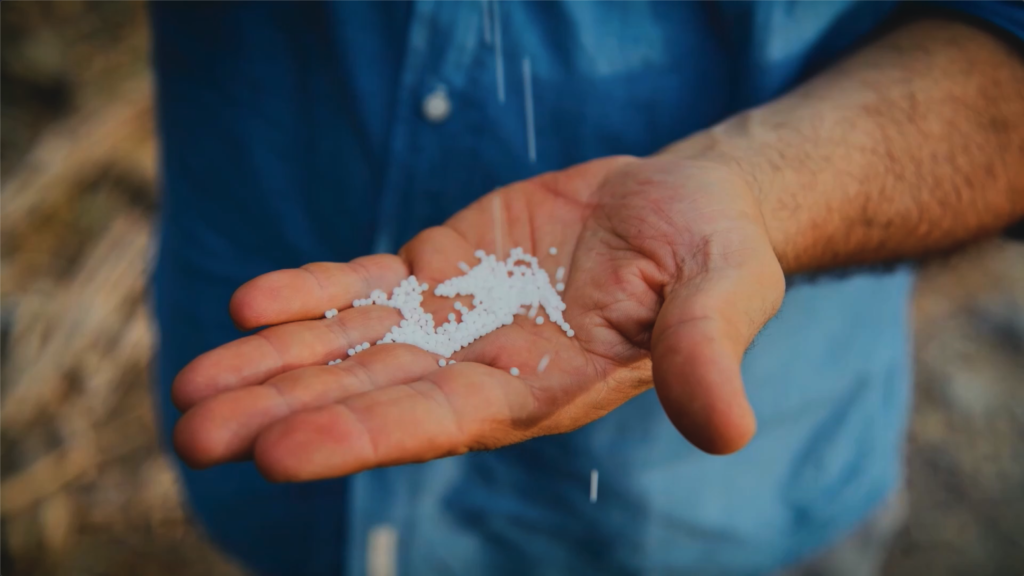Diseases in olive trees and their homeopathic treatment1
Damage due to long-lasting humidity
A significant problem can occur to the olive trees due to the long-lasting presence of humidity, especially following hailstorm.
In thick olive groves, due to heavy rainfalls or morning long-lasting humidity, two phytopathogenic fungi may occur, namely the peacock spot affecting mostly the leaves and the gloesporium, affecting mostly the seed, especially when it is almost mature.
Homeopathic remedies against the long-lasting humidity are the following:
Belladona C 30 or C 200
After three PM, and after midnight; on moving; from touch; from draught of air; from sudden changes from warm to cold weather (Boyle)
Dulcamara C 30 or C 200
Hot days and cold nights toward the close of summer are especially favorable to the action of Dulcamara, and is one of the remedies that correspond in their symptoms to the conditions found as effects of damp weather, colds after exposure to wet (Boericke)
Rhus toxicodenron C 30 or C 200
(Some of the peculiarities of this plant in reference to its poisonous qualities are, that it is “more poisonous at night, or at any time during June or July” (at time of flowering) “when the sun is not shining upon it. Absence of sunlight, together with dampness, seems to favor the exhalation of the volatile principle” (oil) “contained in the leaves” (Millspaugh). In the Homoeopathic Pharmacopoeia we are told to gather the leaves after sunset on cloudy, sultry days, from shady places.(Pierce)
Nux vomica C 30 or C 200
(Disposition to take cold and great sensitiveness to draft of air, and aversion to the open air. Paralysis, with coldness of the paralyzed parts. (Lippe)
Pulsatilla C 30 or C 200
(WORSE getting feet wet. (Boger)
Natrium sulphuricum C 30 or C 200
(especially indicated for the so-called hydrogenoid constitution, where the complaints are such as are due to living in damp houses, basements, cellars. They are worse in rainy weather, water in any form. FEELS EVERY CHANGE FROM DRY TO WET; cannot even eat plans growing near water, nor fish (Boericke)
Silicea C 30 or C 200
The great and important effect of Silicea lies in the nutritive changes which are made by it (Farrington)
Thuja C 30 or C 200
These peculiar strong odors are particularly present when there are fig-warts upon the genitals such as Thuja cures. (Kent)
Damage due to drought – intense solar radiation
The olive tree is withered and damage is caused to the photosynthesis, turgor is reduced, the leaves fall and the tree dies. At the initial stage, we notice its leaves shriveling and losing their elasticity; at the same time when it has not rained for long, the leaves of the tree start turning yellow and wither, and afterwards the tree branches are affected.
Attention: Withering by draught should not be confused with verticillium wilt!
At an initial stage, one of the following remedies would help:
Belladona C 30 or C 200
Heat, redness and dryness of skin. (Hering)
If, however, the condition has worsened, then we should consider:
Causticum C 30 or C 200
Burns; vesicles under prepuce, changing to ulcers. ( Allen)
and of course:
Cantharis C 30 or C 200 at the final stage.
Valuable remedy for burns and scalds. (Phatak)
If the entire tree starts withering and its life is threatened, then in order to revive the tree, the following remedies should be used:
Carbo vegetabilis C 30 or C 200
Low, grave, depraved, or cachectic states. (Boger)
Secale cornutum C 30 or C 200
the whole body is pervaded by a sense of great heat. Hemorrhages; continued oozing; THIN, fetid, watery black blood. DEBILITY, ANXIETY, EMACIATION, THOUGH APPETITE AND THIRST MAY BE EXCESSIVE. (Boericke)
Damage due to cold – snowfall – frost
The damage caused due to cold or snowfall becomes visible in spring. Low temperatures cause cells dehydration and rupture of the cell membranes because of the mechanical action of the ice crystals.
Frost types can be distinguished as follows:
- radiation frost or spring frost, caused when the air touches the surface of the plants and the ground, which lose temperature as they send back radiation and
- advection frost or wind frost, where during the night colder layers get close to the ground, whereas warmer layers occur above it (inversion) and thus they concentrate on the ground surface.
The tissue of the olive tree or the occurrence of brown leaves reveal the damage caused by the snow. Particularly if cold wind blows, making the tree’s sap freeze.
In such cases, the clinical image is to have cracks on the branches, whereas the leaves get a brown-reddish colour. Moreover, the leaves that remain on the trees wither, the bark even in large stems ruptures (it can be easily removed) and the buds can be destroyed up to 90%.
The olive tree is also threatened by early autumn frosts. The fruit freezes between -3 and 6ºC , the bark at -7ºC and the wood in the oldest stems at -13ºC .
A south-eastern orientation, sloped terrain and low altitude of the olive grove contribute to damage prevention due to frost. On the contrary, windbreaks may lead to frost cavities, causing thus further damage than expected.
The treatment will depend on the extent of the damage.
Aconitum C 30 or C 200
There is another totally different set of circumstances which call for Aconite, and that is intensely cold winds; or cold wind combined with snow (Shepard M)
Nux vomica C 30 or C 200
Nux is worse in snowy air (Hom Phys)
Calacarea carbonica C 30 or C 200
after a snowstorm or when snow is melting, produces a general feeling of soreness and aching; worse in joints and greatly aggravated by least motion (Allen)
Calcarea phosphorica C 30 or C 200
in changeable weather, especially when snow melts, with east winds;(Allen Hand)
Kalium bichromicum C 30 or C 200
Aggravation results from exposure to cold air, cold winds, even open air; is worse in wet weather and when snow is melting. (Gibson)
Salinity (high salt concentration in the air and in the ground)
The olive tree is resistant up to a 0.3% salt content. This corresponds to 4,70 mmhos/cm approximately. However, irrigation water is recommended not to exceed 0.2% salt content. Olive trees are considered moderately resistant and their resistance mechanism is not to transfer salts to their overground part.
High salinity affects the growth rhythm for both the root and the overground part, the production and finally the survival of the tree itself. Water in low salt content should be provided regularly to the trees, so that salt is transferred below the rhizosphere.
Clinical image: decrease in the growth of the stems and roots, decrease in the leaves’ surface, symptoms of toxicity on the leaves, such as peripheral chlorosis, necrosis of the top at first, which looks a lot like the image that the lack of potassium on the leaves presents.
Olive trees which have been planted near the sea present growth problems.
Homeopathic remedies:
Mainly remedies causing osmoregulation, such as:
Salicylicum acidum C 6 or D6
Weakness, faintness.
Deprives bone of its lime salts. (ClarKe Dict)
Magnesium muriaticum C 30 or C 200
Evil effects of sea bathing. (Boericke)
Natrium chloratum C 30 or C 200
Common salt, profoundly affects the nutrition. Its excessive intake produces symptoms of salt retention, such as dropsies and oedema; but it also affects the blood causing anaemia and leucocytosis (Phatak)
Phosphor C 30 or C 200
Produces a picture of destructive metabolism. Causes yellow atrophy of the liver and sub-acute hepatitis. Tall, slender persons, narrow chested, with thin, transparent skin, weakened by loss of animal fluids, with great nervous debility, emaciation, amative tendencies, seem to be under the special influence of Phosphorus (Boericke)
Silicea C 30 or C 200
The great and important effect of Silicea lies in the nutritive changes which are made by it. As nutritive changes are more evident in the growing child than in the adult, you will find Silicea symptoms appearing mostly in children from infancy up, not that it is contraindicated in the adult, but its use is shown more evidently in the young. The child, then, is imperfectly nourished, not from defective quality of the food it takes, but from defective assimilation (Farrington)
1 Extract from the book to be published “Olea Homeopathica”, by Nikolaos Skarvelakis, regarding the process and proper application of homeopathic remedies


